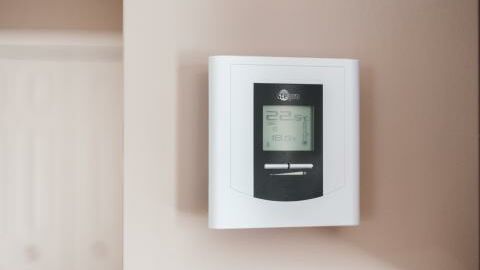Winter is coming, and it's clearly here to stay. This week, the UK is being swept by the 'Moscow-Paris' cold snap, and temperatures are negative in several regions. But while Brits are urged not to turn up the heat too high, in order to save energy, do employees have any rights if they feel it's too cold in their office?
Discover our latest podcast
Unclear rules
You'd think that the British Labour Code would clearly indicate a threshold below which offices are considered unhealthy because they're too cold. Surprisingly, this is not the case! Or almost: put down your thermometer, there's no minimum temperature below which an employee is entitled to go home.
Note that this does not mean that office temperatures are not governed by law. The right of withdrawal exists, and authorizes employees to leave their workstation if it represents a 'risk of serious and imminent danger to their health'.
In addition, article R4223-13 of the French Labor Code stipulates that 'enclosed premises used for work are heated during the cold season. Heating is operated in such a way as to maintain a suitable temperature and not to give rise to any noxious fumes'. But what does 'suitable temperature' mean from a legal point of view? Unfortunately, not much...
The right of withdrawal has already been used
Despite this legal vagueness, we can rely on case law, standards and government statements to get a somewhat objective idea of what 'suitable temperature' means. As lawyer Yann-Maël Larher reminds us:
Jurisprudence has also ruled in favor of employees who exercised their right to withdraw from work in companies where the temperature did not reach 10 degrees in the workshops, and 15 degrees in the offices.
Similarly, standard NF X35-203/ISO 77330 sets the 'thermal comfort threshold' at 20 to 22 degrees in offices. By way of comparison, the government states that 'heating is considered insufficient when it does not allow you to reach 18°C', and ADEME considers that a temperature of 19 to 21°C is ideal for living areas...
As you can see, the notion of cold is highly variable, and the right to withdraw does not apply at the first shiver. Even so, the energy crisis we're living through can have some beneficial effects and change our way of consuming for the better: let's face it, there's a world of difference between a runny nose and death from hypothermia. We've become accustomed to turning up the heat at the first sign of cold, perhaps underestimating a little too much the effectiveness of a thick sweater, a blanket and a hot drink...
Read more:
⋙ UK cold weather: Lowering the temperature in your home too much can have disastrous consequences
⋙ England issued cold weather warning: How long will it last and how to stay safe
⋙ UK cold weather: This is why you start feeling aches and pains when temperatures drop
⋙ Teeth sensitivity in cold weather: This is why it happens
⋙ This is the best at-home remedy for your cold this winter
This article has been translated from Gentside FR.
Sources used:
Can an employee refuse to work in a dangerous situation? - Service Public
How hot should a home be? - Service Public
Cold at work: what right of withdrawal? - LinkedIn















